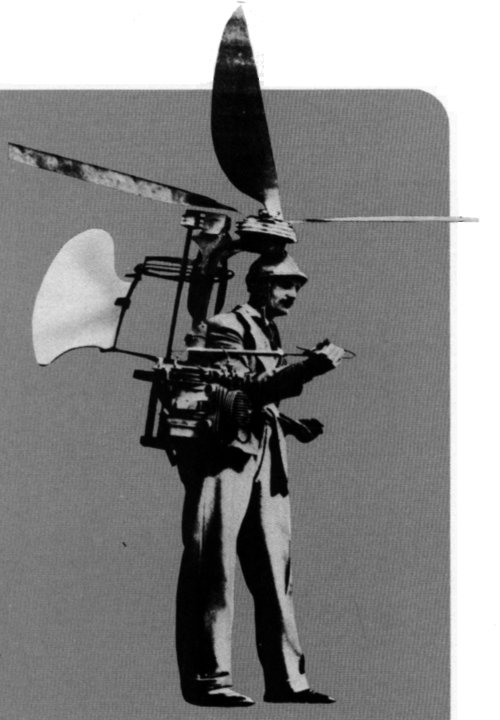By the end of the Second World War, helicopters had proved themselves useful despite the drawbacks of low speed and demanding maintenance requirements. The essential technical advances were:
- Collective pitch control of rotor blades for responsive control of lift.
- Cyclic pitch control of rotor blades for controllable movement in any direction.
- Flexibility of rotor blade hinges to control vibration.
The US army was experimenting with one-man helicopters in the hope that this would give infantry hugely enhanced mobility over the usual trucks and feet. It was widely anticipated that there would be a huge civilian market in the US for tiny helicopters, with sales of 70,000 units a year projected.
It never happened. Extensive tests showed that mini-helicopters were almost as expensive to make and maintain as full-sized ones, had virtually zero payload, and required, if anything, even more skill to fly. It was said that anyone who was bright enough to learn to fly one would have the sense not to...
This page deals only with the smallest of the projected helicopters; what I can only call... er... strap-ons. These are helicopters you fasten to your back rather than sit on.
 |
| Left: A French Strap-On Helicopter by George Sablier.
The "safety" helmet worn by the pilot is a First World War French infantry helmet.
It is not known if this machine ever flew, but from the photograph it seems highly unlikely. It lacks all three of the essential features of helicopters listed above. There also seems to be no means of dealing with the torque reaction which would make the wearer rotate in the opposite direction from the rotor.
What can be said is that it is not shown in a flyable condition. Above the pilot's head is a set of pulleys apparently intended to make the ratio between engine and rotor rpm adjustable; however, there is no belt on the pulleys.
|











